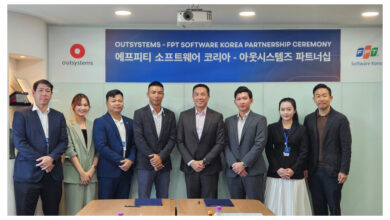Global Mobile Phone Semiconductor Industry (2021 to 2026) – Growth, Trends, COVID-19 Impact, and Forecasts – ResearchAndMarkets.com

DUBLIN–(BUSINESS WIRE)–The “Mobile Phone Semiconductor Market – Growth, Trends, COVID-19 Impact, and Forecasts (2021 – 2026)” report has been added to ResearchAndMarkets.com’s offering.
The Mobile Phone Semiconductor Market was valued at USD 44.931 billion in 2020 and is expected to reach USD 69.303 billion by 2026, at a CAGR of 7.49% over the forecast period 2021 – 2026.
Companies Mentioned
- Samsung Electronics
- Qualcomm Technologies, Inc.
- MediaTek Inc.
- NXP Semiconductors N.V.
- Broadcom Inc.
- Skyworks Solutions Inc.
- Intel Corporation
- Huawei Technologies Co. Ltd
- Micron Technology Inc.
- Qorvo Inc.
Key Market Trends
Memory to Drive the Mobile Phone Semiconductor Market by Component Type
- A large portion of the growth in this segment will be driven by ongoing technological advancements such as cloud computing and virtual reality in end-devices such as smartphones. Sharply higher average selling prices (ASPs) for dynamic random access memory (DRAM) and NAND flash chips are also playing a substantial role in generating revenues.
- In general, the expected price decreases would be offset by new capacity for flash memory and for DRAM, which would result in a better balance of supply and demand for these devices to support more latest applications such as enterprise solid-state drives (SSDs), augmented and virtual reality, artificial intelligence, graphics, and other complex, real-time workload functions.
- The market has been witnessing fluctuations in the supply chain of memory components since 2018, which has also resulted in the variation in NAND and DRAM memory pricing that initially began in late 2018. In 2019, NAND demand remained robust due to the growing adoption of SSDs and continued content growth in smartphones.
- However, the emerging memory technologies are poised to cannibalize huge chunks of the DRAM demand in the industry. In July 2019, Samsung, a major vendor for smartphone’s memory chips, announced that it began the mass production of the industry’s first 12-gigabit (Gb) LPDDR5 mobile DRAM, which is optimized for enabling 5G and AI features in future smartphones.
Asia-Pacific to Hold a Dominant Position in the Mobile Phone Semiconductor Market
- Asia-Pacific is one of the major markets for mobile phone and semiconductor technologies. The region is dominating semiconductor and smartphone manufacturing fields. Most of the major companies, in both the markets, are based in the Asia-Pacific region, while the remaining companies have a presence in the region.
- The region also dominates the global semiconductor market. The increasing smartphone and semiconductor production, especially in the emerging countries, is also augmenting the mobile semiconductor demand in the region. Countries, like India, Vietnam, Thailand, and Singapore, among others, are witnessing an increasing number of smartphone manufacturers setting up their manufacturing plants in the region.
- For instance, in June 2018, Samsung opened the world’s largest smartphone factory in India. China-based OPPO, a smartphone manufacturer, had an initial planning to produce 100 million handsets in India in 2020. Google is moving aggressively to shift production of its Pixel smartphone to Vietnam, as it seeks to build a low-cost supply chain in Southeast Asia.
- China, South Korea, Japan, Singapore, and Taiwan are some of the highly developed semiconductor producers in the region. However, countries, like Malaysia and India, are also emerging as potential markets. The smartphone market is also massive in these countries; hence, they can offer enormous opportunity for the market studied too. Malaysia is emerging as one of the vital semiconductor export markets.
- Recently, in 2020, the Indian government announced that it will unveil a detailed scheme soon, to boost mobile phone and semiconductor manufacturing in the country. A Modified Special Incentive Package Scheme (MSIPS) will promote the 20-odd component manufacturing ecosystem in the country. According to the India Cellular and Electronics Association (ICEA), the country’s mobile phone production, in 2019, was around 350 million units.
Key Topics Covered:
1 INTRODUCTION
2 RESEARCH METHODOLOGY
3 EXECUTIVE SUMMARY
4 MARKET DYNAMICS
4.1 Market Overview
4.2 Introduction to Market Drivers and Restraints
4.3 Market Drivers
4.3.1 Rapid Introduction of Next-generation Mobile-communications Standard, LTE or 4G
4.3.2 Emergence of ‘Multicom’ Solutions
4.4 Market Restraints
4.4.1 Complexity Regarding Manufacturing
4.4.2 Consumer Demand Exceeding Factory Capacity
4.5 Industry Attractiveness – Porter’s Five Force Analysis
4.6 Industry Value Chain Analysis
4.7 Assessment of Impact of COVID-19 on the Market
5 MARKET SEGMENTATION
5.1 Component Type
5.1.1 Mobile Processors
5.1.2 Memory
5.1.3 Logic Chips
5.1.4 Analog
5.2 Geography
5.2.1 North America
5.2.2 Europe
5.2.3 Asia Pacific
5.2.4 Latin America
5.2.5 Middle East and Africa
6 COMPETITIVE LANDSCAPE
6.1 Company Profiles*
6.1.1 Samsung Electronics
6.1.2 Qualcomm Technologies, Inc.
6.1.3 MediaTek Inc.
6.1.4 NXP Semiconductors N.V.
6.1.5 Broadcom Inc.
6.1.6 Skyworks Solutions Inc.
6.1.7 Intel Corporation
6.1.8 Huawei Technologies Co. Ltd
6.1.9 Micron Technology Inc.
6.1.10 Qorvo Inc.
7 INVESTMENT ANALYSIS
8 MARKET OPPORTUNITIES AND FUTURE TRENDS
For more information about this report visit https://www.researchandmarkets.com/r/eaaabl
Contacts
ResearchAndMarkets.com
Laura Wood, Senior Press Manager
[email protected]
For E.S.T Office Hours Call 1-917-300-0470
For U.S./CAN Toll Free Call 1-800-526-8630
For GMT Office Hours Call +353-1-416-8900




